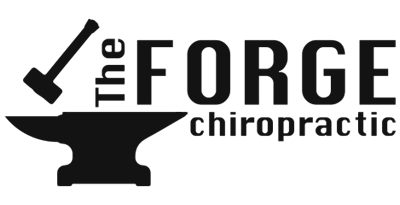Understanding Common Upper Extremity Conditions: Shoulder, Arm, Elbow, and Wrist Pain Relief in Baldwin WI

Your upper extremities – encompassing your shoulders, arms, elbows, and wrists – are involved in nearly everything you do. Their complex structure allows for incredible mobility but also makes them susceptible to various injuries and conditions. At our chiropractic clinic in Baldwin WI, we frequently help patients nd relief from pain and dysfunction in these areas. This page provides a concise overview of several common upper extremity conditions. An accurate diagnosis by a healthcare professional is always the first step towards effective treatment.
Rotator Cuff Injuries (Shoulder)
The rotator cuff is a group of four tendons that stabilize your shoulder joint.
- What it is: An injury to these tendons, ranging from inflammation ("tendinopathy") or a mild strain to a partial or full-thickness tear. Most develop gradually from repetitive use or age-related wear, not a single event. The supraspinatus tendon is often affected first.
- Common Causes: Repetitive overhead activities (sports, certain jobs), impingement (pinching of tendons), and tendon degeneration (breakdown of collagen). Risk factors include age, smoking, obesity, diabetes, and poor shoulder mechanics.
- Symptoms: Typically shoulder pain (especially with overhead movement or at night), weakness, and limited motion.
Thoracic Outlet Syndrome (TOS)
TOS involves compression of nerves and/or blood vessels in the space between your collarbone, first rib, and surrounding neck/chest muscles.
- What it is (Neurogenic TOS): The most common type (over 95%) involves
compression of the brachial plexus nerves supplying the arm. Vascular TOS (affecting arteries or veins) is rare and requires prompt medical evaluation. - Common Causes: Poor posture (like forward head and rounded shoulders),
repetitive overhead activities, trauma (e.g., whiplash), or anatomical variations like an extra cervical rib. Compression can occur between neck muscles (scalenes), under the chest muscle (pectoralis minor), or between the first rib and collarbone. - Symptoms: Often pain, numbness, or tingling in the arm, forearm, or fingers (frequently the ring and little finger side), and sometimes weakness or a sense of heaviness in the arm.
Acromioclavicular (AC) Joint Sprains (Shoulder Separation)
The AC joint is where your collarbone (clavicle) meets your shoulder blade (acromion).
- What it is: Damage to the ligaments stabilizing this joint. Severity ranges from a mild sprain (Type I) to a more significant tear with slight separation (Type II), or a complete tear of key ligaments causing a visible deformity (Type III). More severe types (IV-VI) involve major displacement and require orthopedic surgery.
- Common Causes: Usually a direct fall onto the point of the shoulder, or sometimes a fall onto an outstretched hand. Common in contact sports.
- Who's Affected: Often young adults, with males affected more than females.
Medial Epicondylopathy (Golfer's Elbow)
This condition causes pain on the inner side of your elbow.
- What it is: Irritation or degeneration of the common tendon where your wrist and finger extensor muscles (muscles that bend the wrist and fingers palmwards) attach to the bony bump on the inside of your elbow (medial epicondyle). It's typically a "tendinopathy" (degeneration) rather than acute inflammation.
- Common Causes: Repetitive or forceful wrist extension, forearm pronation (turning palm down), or activities that put an inward (valgus) stress on the elbow. Despite the name, most people with this aren't golfers. It can be related to sports (golf, baseball pitching, certain tennis strokes) or occupations (e.g., carpentry).
- Risk Factors: Obesity, smoking, and Type II diabetes can increase risk.
Lateral Epicondylopathy (Tennis Elbow)
This is the most common cause of elbow pain, affecting the outer side.
- What it is: Painful irritation or degeneration of the common tendon where your wrist and finger extensor muscles (muscles that bend the wrist and fingers backwards) attach to the bony bump on the outside of your elbow (lateral epicondyle). It's primarily a "tendinopathy" (degeneration), one affecting the extensor carpi radialis brevis (ECRB) tendon, an area with relatively poor blood supply.
- Common Causes: Repetitive or forceful wrist extension. While called "tennis elbow" (often linked to improper backhand mechanics), only a small percentage of cases are tennis-related. Many occupations involving repetitive hand and wrist tasks (e.g., carpentry, keyboard/mouse use) can contribute.
- Risk Factors: Smoking and high cholesterol can also be factors.
Adhesive Capsulitis (Frozen Shoulder)
Frozen shoulder is characterized by progressive, painful stiffness and a significant loss of active and passive shoulder motion.
- What it is: The capsule surrounding the shoulder joint becomes inflamed,
thickened, and tight. It can be Primary (no known cause) or Secondary (following a period of shoulder immobility due to injury, surgery, etc.). - Stages: Typically evolves through a "freezing" stage (increasing pain and stiffness), a "frozen" stage (stiffness peaks, pain may lessen), and a "thawing" stage (gradual return of motion, which can take many months).
- Risk Factors: Diabetes and thyroid disease signicantly increase risk. It's most common between ages 40-65, and aects females more oen.
Carpal Tunnel Syndrome (Wrist/Hand)
CTS occurs when the median nerve is compressed in the carpal tunnel – a narrow passageway in your wrist.
- What it is: This compression interferes with nerve function, causing symptoms in the hand.
- Common Causes: Often multifactorial. Repetitive hand/wrist motions, prolonged wrist exion/extension (common in certain occupations or with prolonged smartphone use), vibration, and fluid retention (like during pregnancy) are common factors.
- Risk Factors: Health conditions like diabetes, hypothyroidism, rheumatoid arthritis, increased BMI, and prior wrist trauma can also contribute.
- Symptoms: Typically numbness, tingling, or pain in the thumb, index, middle, and part of the ring nger; sometimes weakness in grip. Symptoms are oen worse at night.
- Prevalence: A very common nerve entrapment, more frequent in women, peaking in middle age.
Approaches to Upper Extremity Conditions in Baldwin WI
At The Forge Chiropractic, our first step is always a thorough evaluation to arrive at an accurate diagnosis, as different conditions require different approaches. Many upper extremity problems can also be influenced by or related to issues in the neck and upper back.
- Comprehensive Evaluation:
- Detailed History: We'll discuss your symptoms in detail – onset, nature of pain, what makes it better or worse, how it affects your daily activities, work requirements, recreational activities, past injuries, and your overall health.
- Physical Examination: This will include observation of your posture and how you move, assessment of active and passive range of motion for the aected joints (shoulder, elbow, wrist, and oen neck/upper back), specic orthopedic tests relevant to the suspected condition (e.g., impingement tests for the shoulder, tests for epicondylopathy, TOS maneuvers, tests for carpal tunnel syndrome), neurological screening (checking sensation, muscle strength, and reexes), and careful palpation to identify tender structures, muscle spasm, or trigger points. We'll also assess how the condition impacts your functional abilities. (If applicable, Jtech functional assessment tools may be used for objective measures of strength or range of motion.)
- Whole-Person Healthcare Approach: We look at the bigger picture, considering contributing factors such as your overall posture, ergonomics at work and home, patterns of repetitive activity, and how your whole body's biomechanics might be playing a role.
- Personalized Treatment Strategies: Based on your diagnosis, your individualized treatment plan may include a combination of:
- Restoring Joint Mechanics: Chiropractic adjustments and mobilizations to affected joints in the upper extremity, as well as the cervical and thoracic spine, as these areas are often interconnected with arm function and pain.
- Soft Tissue Therapies: We offer a range of tissue therapies to address muscle tightness and trigger points that can contribute to pain and restricted movement. These in-office therapies will include, but are not limited to, Instrument-Assisted Soft Tissue Mobilization (IASTM), Dry Needling, Dynamic Cupping, and Voodoo Flossing.
- Rehabilitative Exercises: Specic exercises tailored to your condition to help improve strength (e.g., for rotator cu or scapular stabilizers), exibility (stretches for tight muscles around the elbow or shoulder), and overall endurance and stability of the supporting musculature.
- Nerve Mobilization Techniques (Neurodynamics): Gentle techniques may be used for conditions like Thoracic Outlet Syndrome or Carpal Tunnel Syndrome, where nerve irritation or compression is a component, to help improve nerve gliding and reduce irritation.
- Education and Lifestyle Advice: Guidance on activity medication, ergonomic adjustments for your workspace or daily tasks, self-care strategies to manage symptoms, and preventative measures to reduce the risk of recurrence.
- Co-management and Referral: We work collaboratively with other healthcare providers. If your condition requires medical management (like medication or injections), advanced imaging, or a consultation with an orthopedic specialist (e.g., for severe AC joint separations, full-thickness rotator cu tears potentially needing surgery, suspected vascular TOS, or severe Carpal Tunnel Syndrome unresponsive to conservative care), we will ensure you get the appropriate referral and coordinated care.
Our goal at The Forge Chiropractic is to help you understand your condition, alleviate your pain, restore function to your upper extremity, and get you back to enjoying your daily activities and hobbies. If you're experiencing pain or limitation in your shoulder, arm, elbow, or wrist, we invite you to schedule a consultation at our Baldwin, Wisconsin office.
OFFICE HOURS
Monday
12:00pm - 6:00pm
Tuesday
8:00am - 12:00pm
2:00pm - 6:00pm
Wednesday
8:00am - 12:00pm
2:00pm - 6:00pm
Thursday
8:00am - 12:00pm
2:00pm - 6:00pm
Friday
8:00am - 12:00pm
Saturday & Sunday
Closed
The Forge Chiropractic
900 Main St
Baldwin, WI 54002



